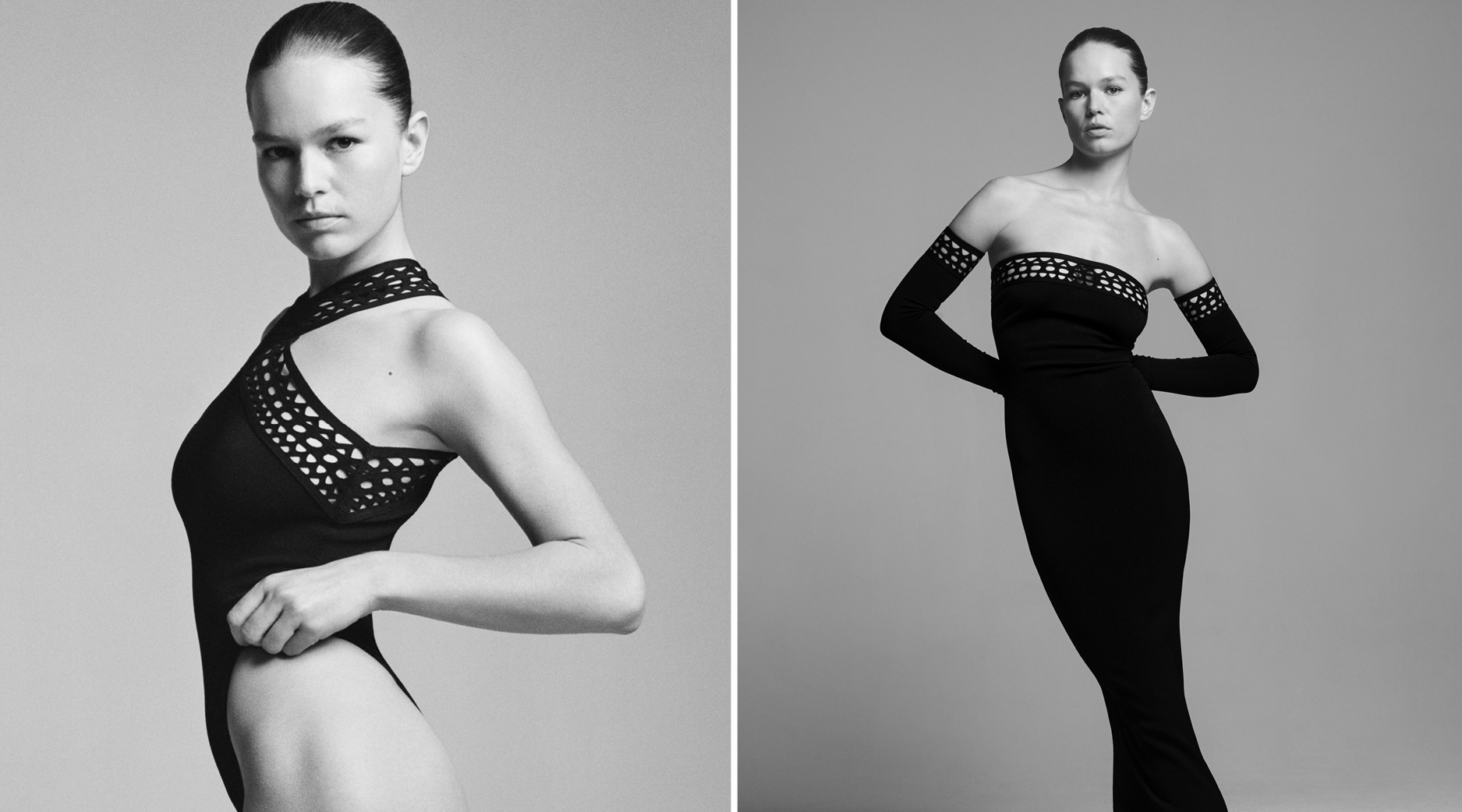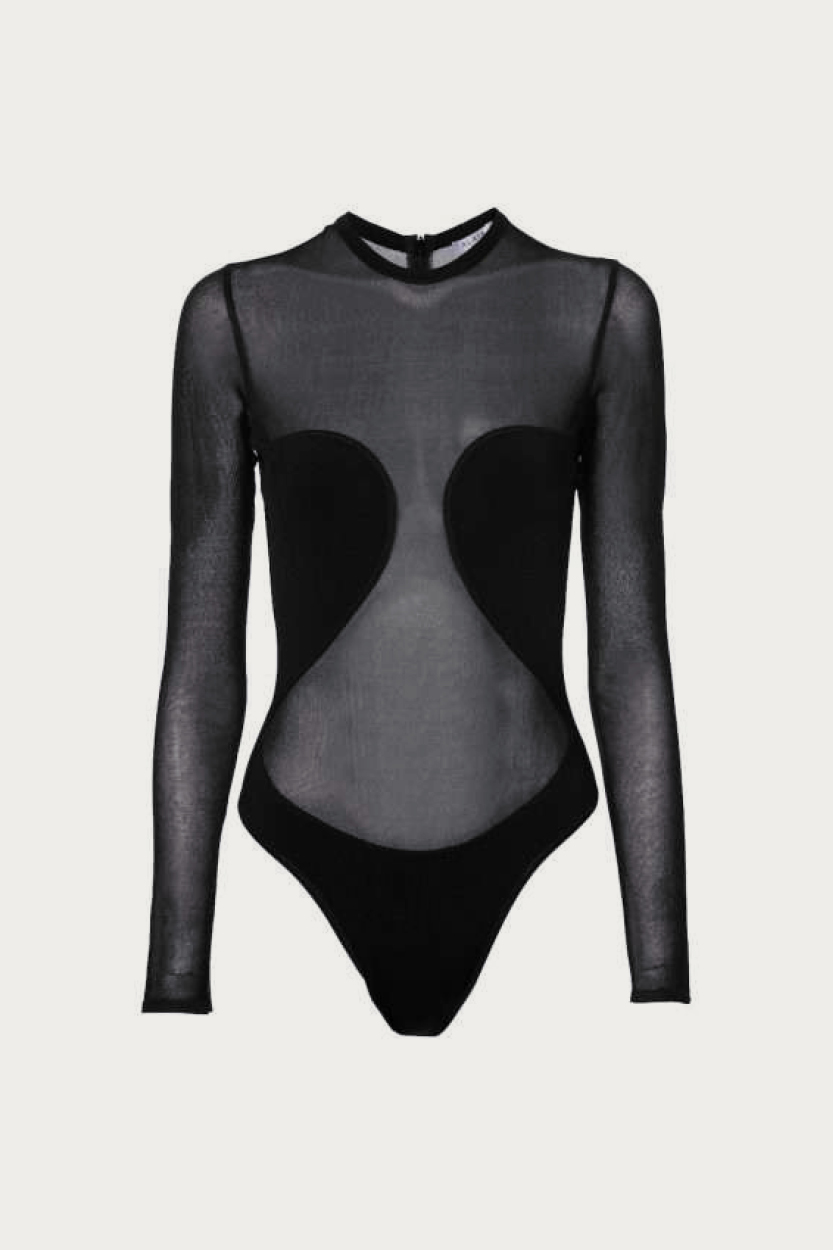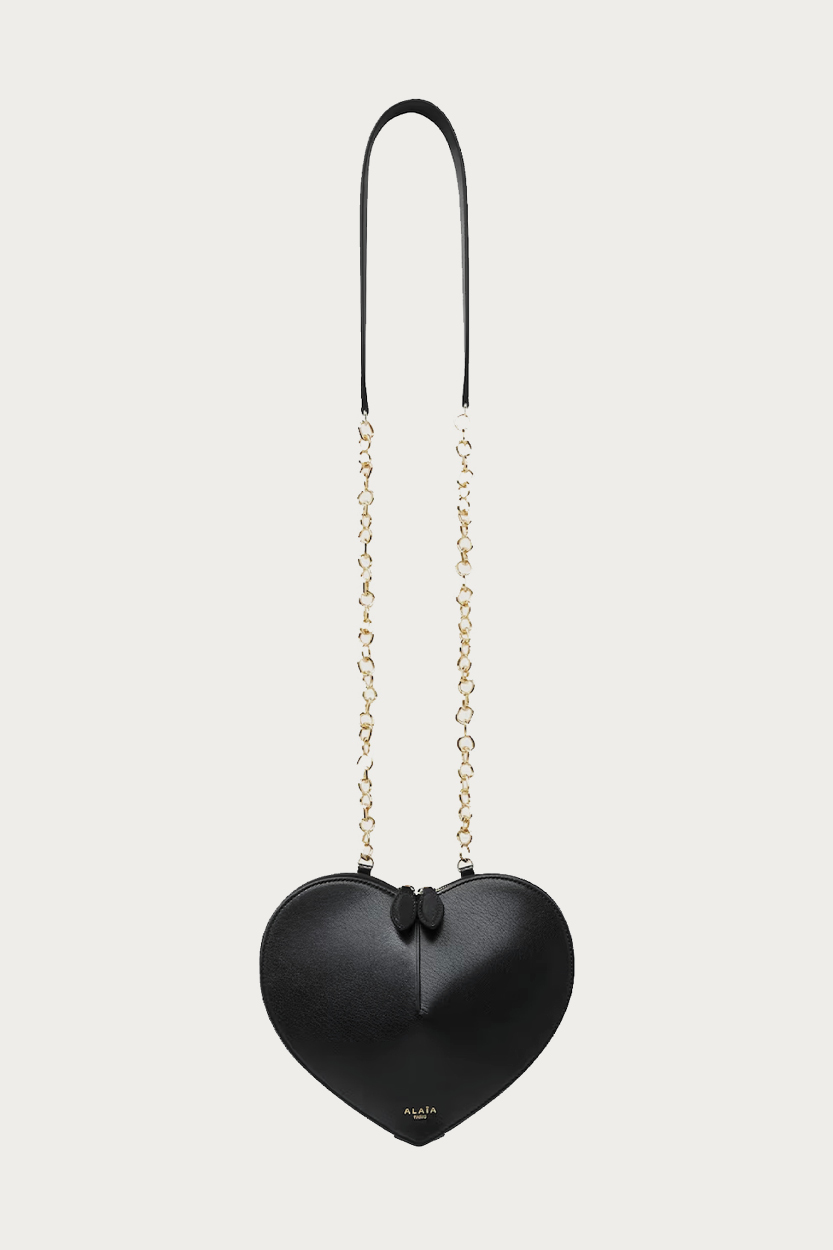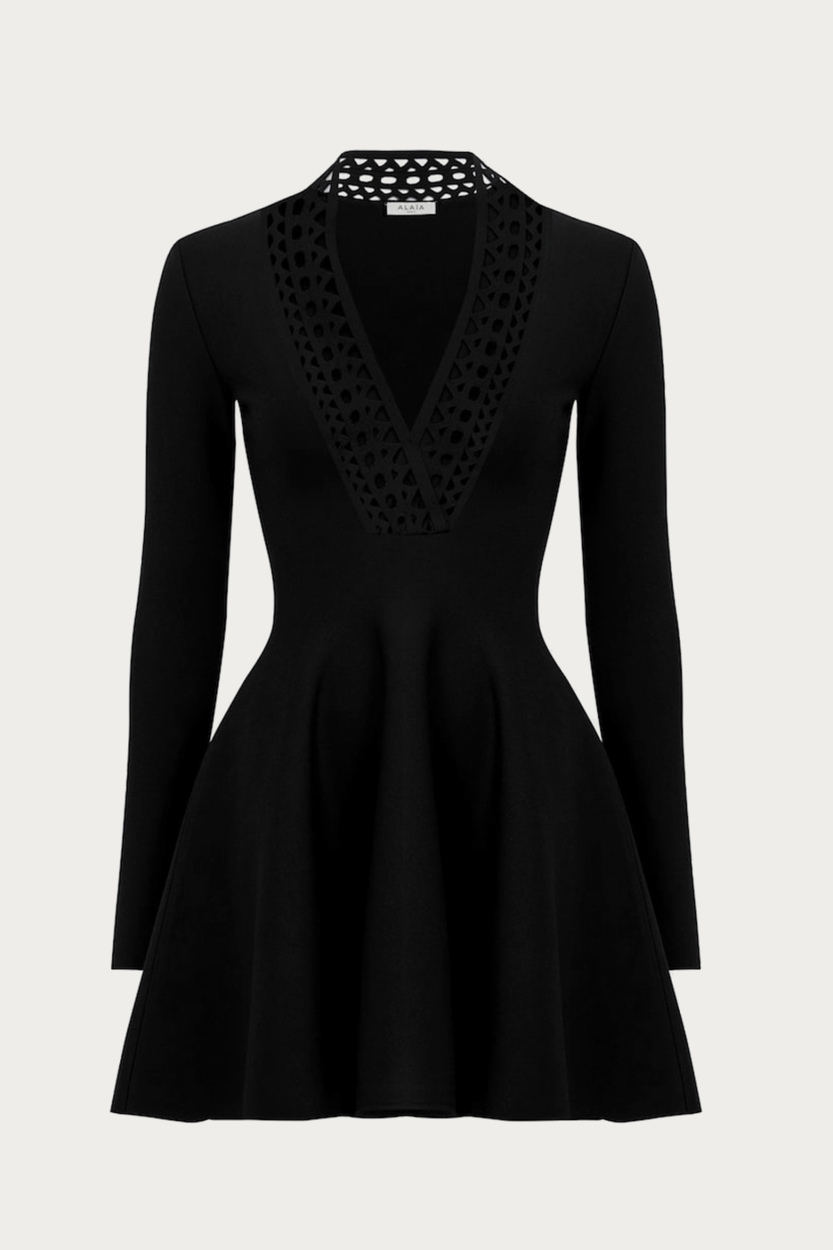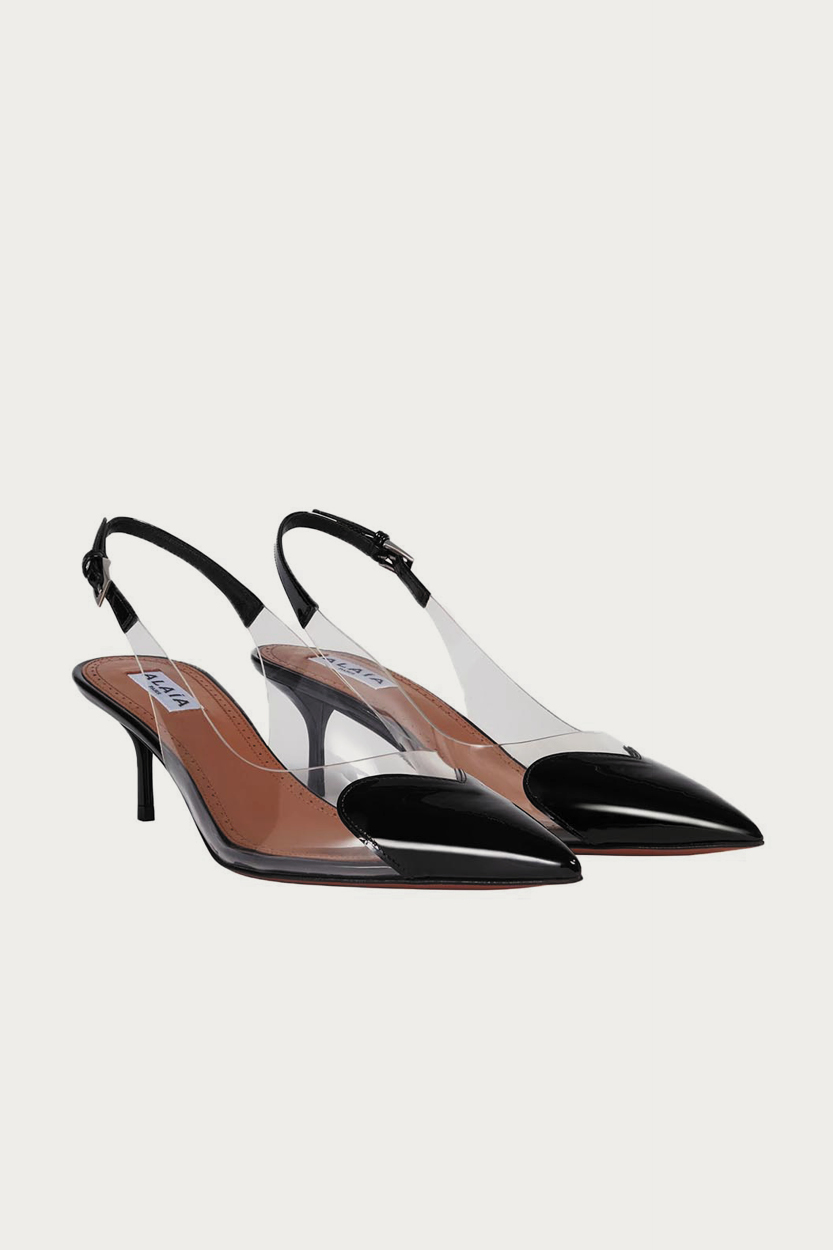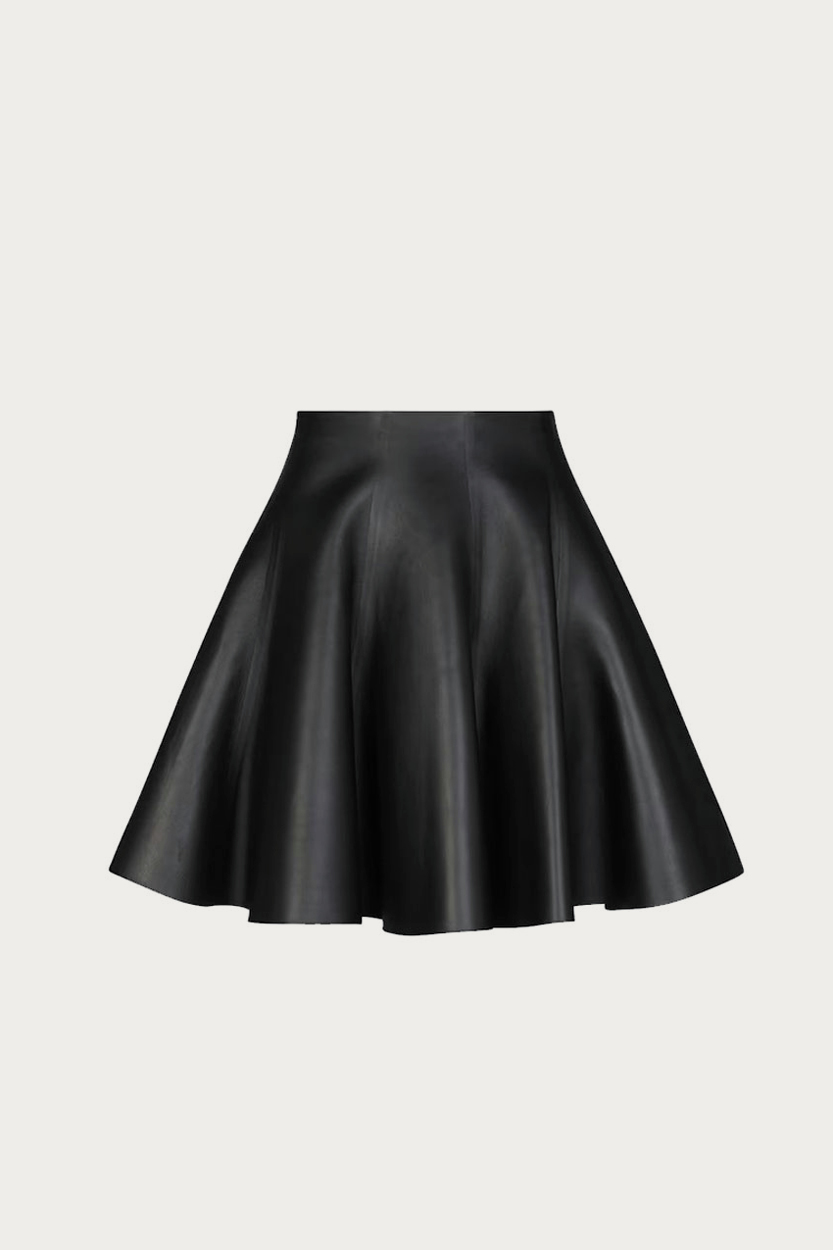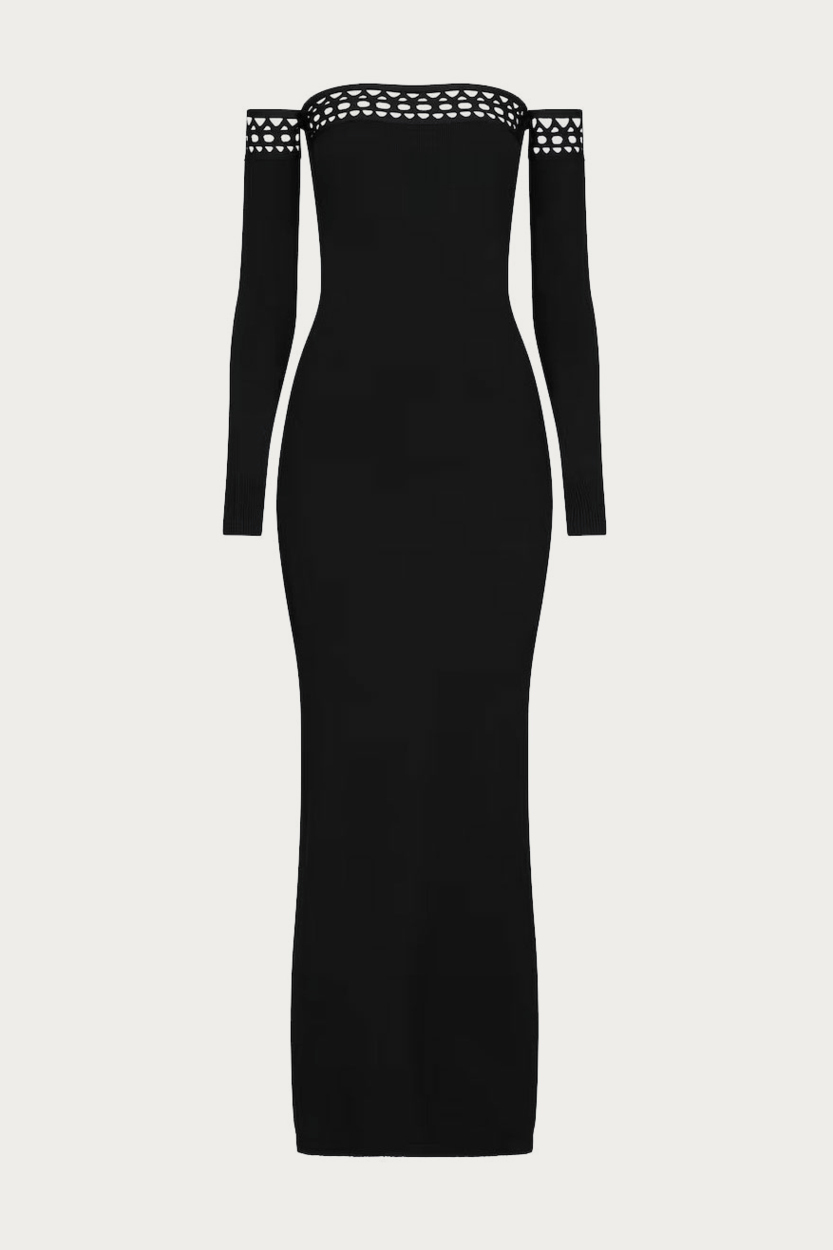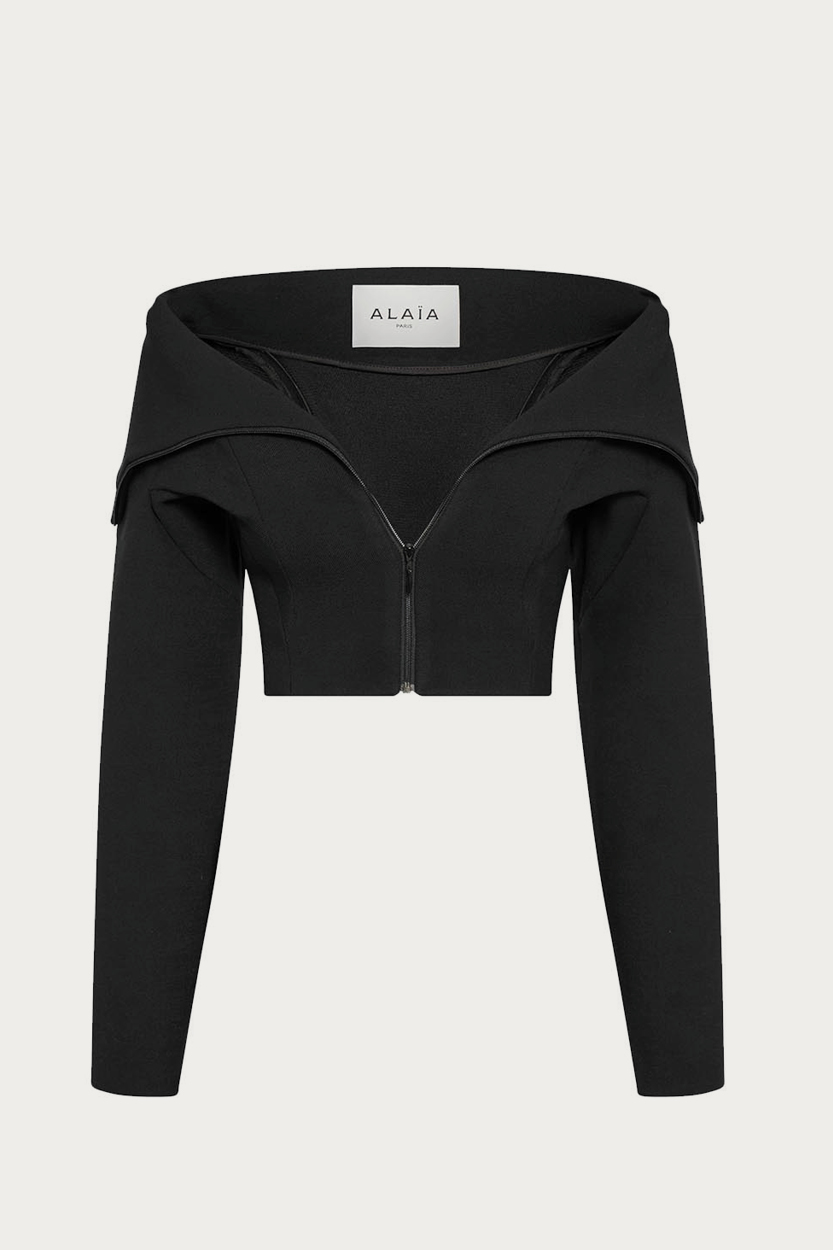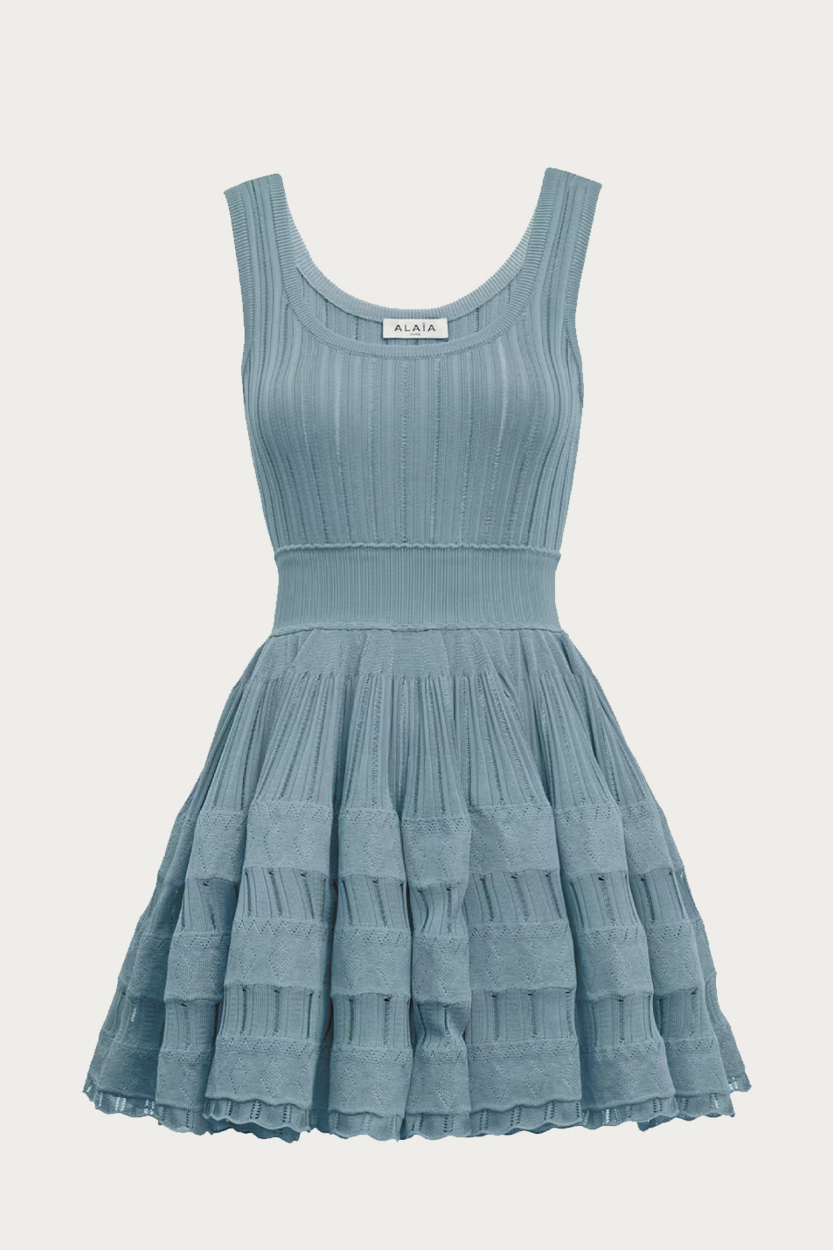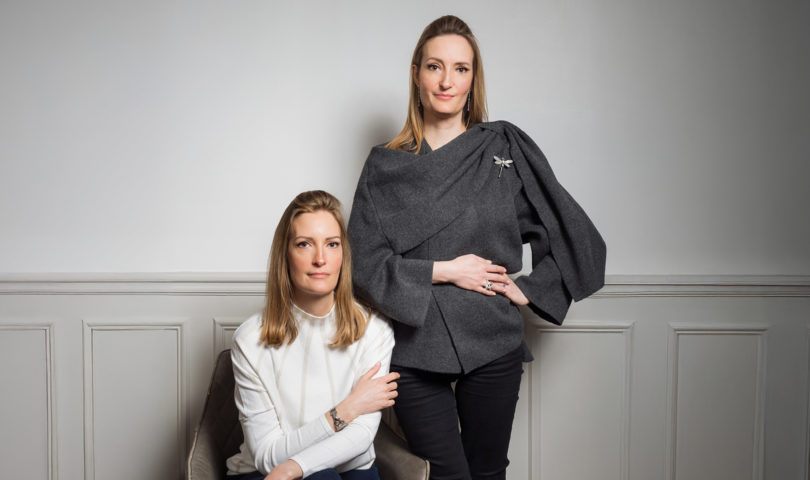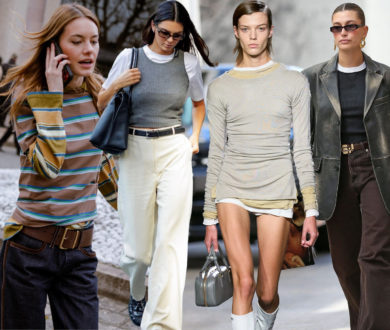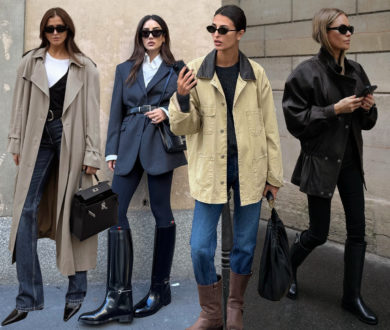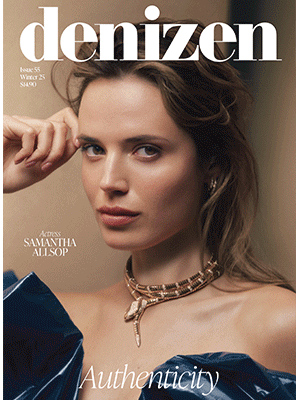Even if you aren’t familiar with Alaïa, or the story behind it, you’d have to have been living under a rock to have not encountered someone wearing the brand’s viral fishnet or studded ballet flats, or
its heart-shaped ‘Le Cœur’ crossbody bag. So prolific have these pieces become that demand has caused world-wide wait-lists, as fashion’s most discerning collectors clamber over one another to get their hands on the pieces that have sparked such a frenzy, pieces favoured by fashion week’s most followed street style doyennes.
For Faradays’ Creative Director Constance von Dadelszen, her passion for Alaïa has been a long-time love affair. “I never feel more beautiful or confident than when I wear Alaïa,” she tells me, “the attention to detail, the incredible cuts, the inimitable fabrics… we feel so privileged to have the brand’s full offering at Faradays, as its exclusive New Zealand stockist.” It’s an obsession that von Dadelszen explains she now sees in her customers too. “Many of our clients purchase Alaïa pieces with the intention of passing them down to their daughters one day,” she says, “which speaks volumes about its quality and iconic designs.” Because Alaïa is far more than its recently viral moments (despite those things thrusting the brand more into the mainstream than ever before), it is (and has been for a long time) an iconic house, its cultural and reputational power almost unparalleled and its pivotal role in the evolution of luxury fashion as we know it today, crucial. And while the brand itself has produced era-shifting collections, its importance has much to do with its famous founder, Azzedine Alaïa and what he stood for, as it does with the clothes themselves.
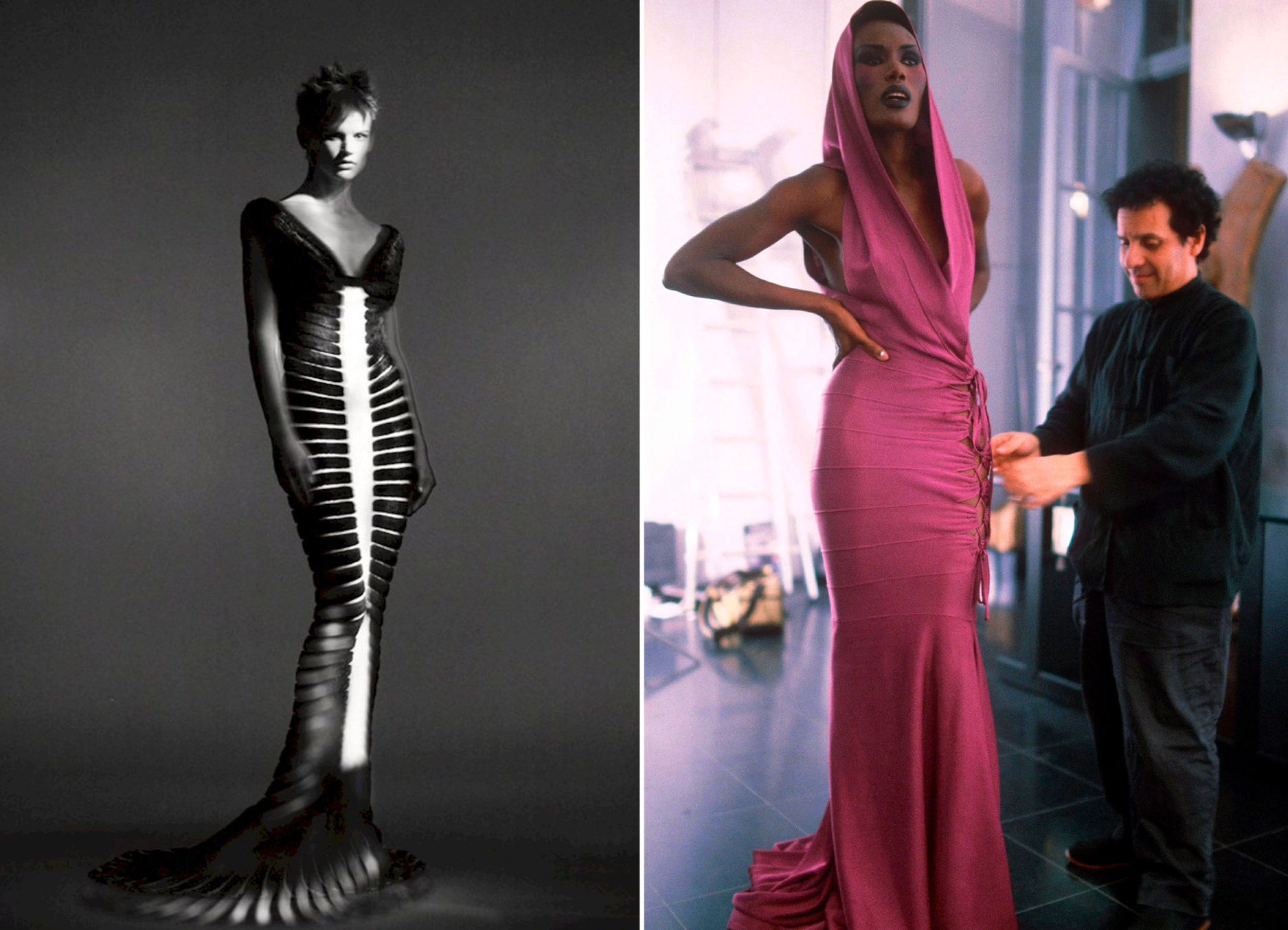
Alaia was born in 1935 in Tunisia and started out studying sculpture before moving into the industry in which he was destined to make such a significant impact. “When I was in Tunis, I went to the École des Beaux Arts and I decided to study sculpture because of my fascination with the curves of the body,” Alaïa said. “Then I discovered fashion.” Credited as being one of the most gifted designers of his generation, Alaïa started his career working for the likes of Christian Dior, Guy Laroche and Thierry Mugler before setting up his own eponymous studio in Paris in 1964. The young designer quickly established himself among the City’s elite as a virtuoso in cutting a garment to a woman’s body, designing for a private clientele that included the likes of Greta Garbo and Cécile de Rothschild.
It was after showing his first ready-to-wear collection in 1981 that Alaïa started making waves in the industry at large. Designing with a mandate to accentuate the beauty and natural curvature of the women who would be wearing his pieces, Alaïa’s early introduction of ‘body-con’ styles earned him the nickname, ‘King of Cling,’ and saw him create some utterly iconic designs, including dresses like the ‘Houpette’, the ‘Skater’, the ‘Blandettes’ and the ‘Ribbon’.
From the 80s onwards, Alaïa was a major player in fashion, not for the volume of looks or collections his house produced, mind you (he was never one to follow the conventional fashion calendar), but for the central role that his clothes held in the culture. The designer dressed Tina Turner and Grace Jones (he notably did Jones’ costumes for the 1985 Bond film, A View To Kill, in which she wore a hooded Alaïa bandage dress to play the role of villain, May Day), and was largely responsible for propelling fledgling models Naomi Campbell, Stephanie Seymour and Cindy Crawford to supermodel status.
For nearly 40 years, Alaïa was held as a master of his craft, creating clothes that transcended trends long before the idea of ‘seasonless’ or ‘slow’ fashion was a movement. “My obsession is to make women beautiful,” he said. “When you create with that in mind, things can’t go out of fashion.” Indeed, almost all of Alaïa’s creations and collections have enjoyed the kind of staying power not often seen in this notoriously fickle industry, and even when his business went through significant changes (from the sale of a stakeholding to Prada in 2000, to Alaïa himself deciding to buy one hundred percent of the business back, to the arrival of luxury conglomerate Richemont, who acquired the brand in 2007) the true essence of Alaïa was never lost.
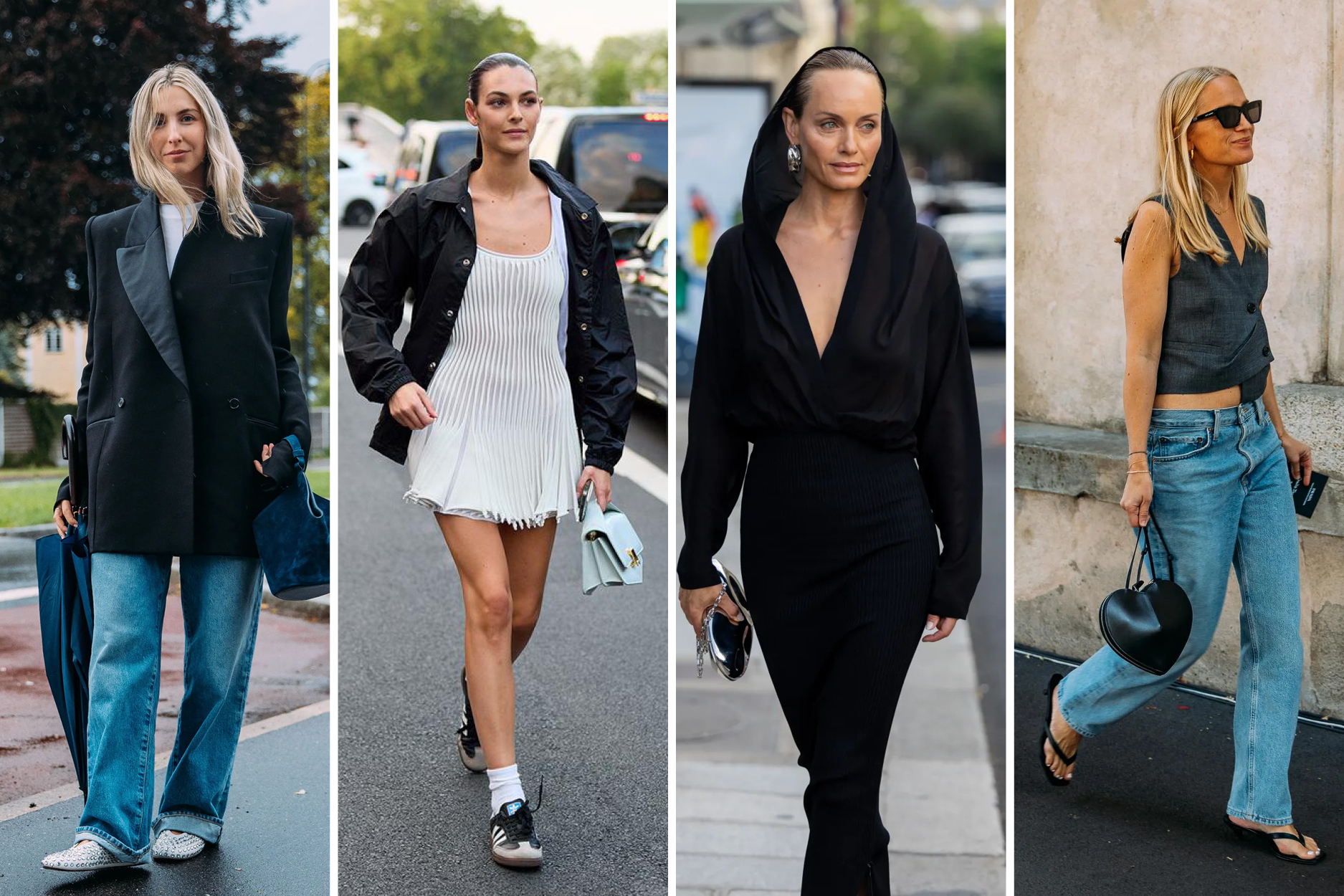
It wasn’t until his death in 2017 that the future of the house that Alaïa had so carefully built was called into question. After all, what would the brand be without the iconoclastic man who had given it his name, and filled it with his passion? The answer to that came three years after Alaïa’s passing, when an industry veteran who had worked for more than two decades at the heart of fashion but who (by his own admission) was done with all of it, got the call up. Antwerp-based designer Pieter Mulier had spent most of his career at the side of Raf Simons, and had just emerged from a tenure at Calvin Klein when Richemont approached him with the offer of Alaïa. Speaking with Jo Ellison for the Financial Times, earlier this year, Mulier explained that his new role as Creative Director came with no targets or KPIs or merchandisers, only the simple request that he maintain the brand’s already-high reputation and work on making it more well-known.
The beauty of what Mulier has done at Alaïa is anchored in his careful approach. Acknowledging that the company was more like a family than any profit-driven modern fashion house, Mulier executed his role with respect for both the atelier, its longstanding employees, and the history that underpinned the whole operation. His vision was to simplify the clothing and redefine the brand, dipping into the extensive Alaïa archive to reimagine the clothes and the codes for a contemporary customer, while honouring the legacy of the man whose presence still looms large.
As von Dadelszen says, “Alaïa is one of the few brands that gives me hope that some companies create collections to continue the legacy of the founder, rather than it just being purely about money.”
Mulier has kept the focus on Alaïa’s signature hourglass silhouette, maintained the brand’s penchant for unapologetic glamour and merely tweaked a few of its timeless styles. But, he has also pushed the brand forward, introducing new categories like denim, and a range of accessories, like the aforementioned shoes and bags. Cleverly, he has considered how women want to dress everyday, and has transformed Alaïa’s collections into a more holistic offering without ever compromising the heart of the brand — not an easy balance to strike.
“The brand has had such a successful rise with Pieter Mulier,” von Dadelszen tells me, “with his clever reinterpretation of the brand codes, there’s a youth and vitality that the brand has now that speaks to a new generation of customers, while maintaining the interest of their loyal, life-long clients.” She continues, “I see such passion for this brand, passion that isn’t based on resale value or wanting the latest trend, on investing in pieces that are timeless, that will stay in the wardrobe forever… you could never be a fashion victim while wearing Alaïa.”

